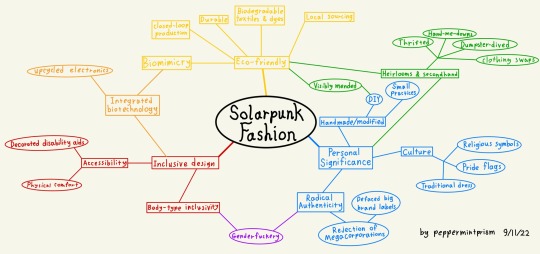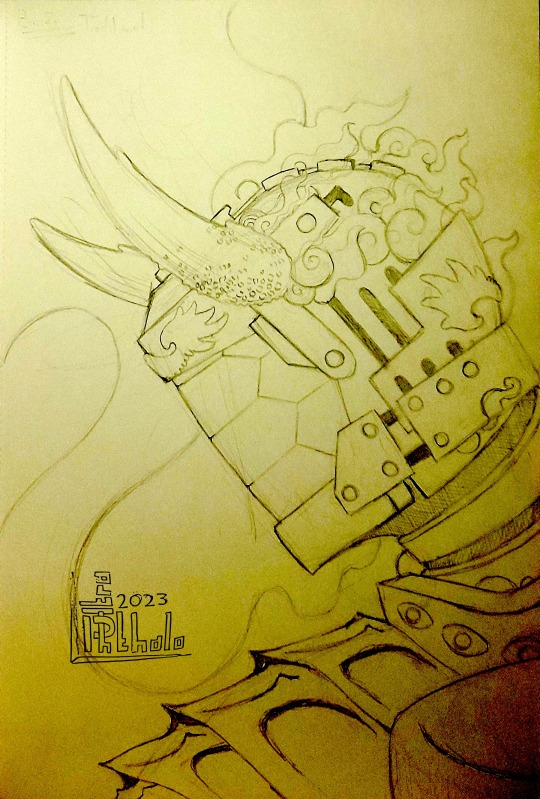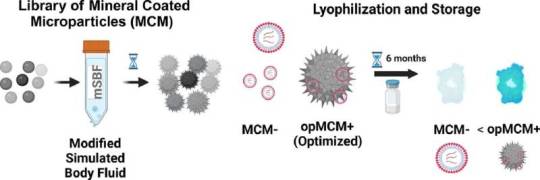#biomimicry
Text
"The search has intensified for alternative energy-saving technologies for heating and cooling that don’t run on fossil fuels.
Now, by mimicking a desert-dwelling chameleon, Chinese scientists have developed a cheap energy-efficient, cost-effective coating on houses.
They say the new material could keep buildings cool in the summer or warm in the winter without using additional energy.
“Many desert creatures have specialized adaptations to allow them to survive in harsh environments with large daily temperature shifts,” said Dr. Fuqiang Wang, author on the paper describing the invention and researcher at the Harbin Institute of Technology. “For example, the Namaqua chameleon of southwestern Africa alters its color to regulate its body temperature as conditions change.”

Pictured: A Namaqua Chameleon
...Many systems, such as cooling paints or colored steel tiles, are only designed to keep buildings either cool or warm, and can’t switch between modes.
Inspired by the Namaqua chameleon, Dr. Wang and his colleagues wanted to create a color-shifting coating that adapts as outside temperatures fluctuate...
When heated to 68 degrees Fahrenheit, the surface began to change from dark to light grey. Once it reached 86F, the light-colored film reflected up to 93% of solar radiation.
“Even when heated above 175 degrees Fahrenheit for an entire day, the material showed no signs of damage,” reported Dr. Wang.
The team then tested it alongside three conventional coatings—regular white paint, a passive radiative cooling paint, and blue steel tiles in outdoor tests on doghouse-sized buildings throughout all four seasons...
In summer, the new coating was significantly cooler than the white paint and steel tiles, according to the findings published in the journal Nano Letters.
“During spring and fall, the new coating was the only system that could adapt to the widely fluctuating temperature changes, switching from heating to cooling throughout the day,” Dr. Wang added.
The researchers say that the color-changing system could save a “considerable” amount of energy for regions that experience multiple seasons, while still being inexpensive and easy to manufacture."
-via Good News Network, September 21, 2023
#chameleon#extreme heat#climate adaptation#architecture#green architecture#saving energy#climate crisis#global warming#sustainability#solarpunk#good news#hope#biomimicry#air conditioning
472 notes
·
View notes
Text
Indian IT Worker Designs New Eco-Friendly Sewage Treatment Method with the Sacred Cow as His Inspiration https://www.goodnewsnetwork.org/indian-it-worker-designs-new-eco-friendly-sewage-treatment-method-with-the-sacred-cow-as-his-inspiration/
Tharun Kumar began to imagine ways to build a better sewage treatment method that could produce good quality water without chemicals.
In 2017, Kumar started ECOSTP with the chambered stomach of the cow as his “bovine inspiration.”
Typical wastewater plants use aerobic bacteria, or metabolism with oxygen, to break down sewage, but this requires the ventilation system that continually runs on energy. Regular sewage treatment also tends to use chemicals, and has the presence of a full-time employee. Kumar has eliminated almost all of these drawbacks.
At the base of the ECOSTP septic tank is a layer of cow dung that provides the bacterial workers. With the water moving via gravity, it enters the second bacterial chamber before passing into the third space which is a filter of sand and gravel. The fourth chamber lies under a garden of select vascular plants which removes suspended solids, pathogens, nitrogen, and phosphorus, the latter two going to feed the plants.
The resulting water is graded by health inspectors as good quality for toilet water and gardening applications. With the aid of a grant from the US-based Biomimicry Solutions, ECOSTP now has 325 clients across 22 states in India, and their septic tanks are unmanned and unpowered, saving thousands in running costs.
“We are proud to have reclaimed 2 billion liters of sewage so far without power or chemicals.”
ECOSTP is now seeing if it’s possible to identify anaerobic bacteria that can remove the harmful compounds of industrial effluent.
youtube
#good news#science#microbiology#india#waste water treatment#wastewater#green technology#biomimicry#environmentalism#environment#nature#animals#climate change#climate crisis#Youtube
252 notes
·
View notes
Text

Crab Time
67 notes
·
View notes
Text
A team of scientists from Nanyang Technological University, Singapore (NTU Singapore) has developed an artificial 'worm gut' to break down plastics, offering hope for a nature-inspired method to tackle the global plastic pollution problem.
By feeding worms with plastics and cultivating microbes found in their guts, researchers from NTU's School of Civil and Environmental Engineering (CEE) and Singapore Centre for Environmental Life Sciences Engineering (SCELSE) have demonstrated a new method to accelerate plastic biodegradation.
Previous studies have shown that Zophobas atratus worms -- the larvae of the darkling beetle commonly sold as pet food and known as 'superworms' for their nutritional value -- can survive on a diet of plastic because its gut contains bacteria capable of breaking down common types of plastic. However, their use in plastics processing has been impractical due to the slow rate of feeding and worm maintenance.
Read more.
#Materials Science#Science#Plastics#Polymers#Biomimicry#Biodegradable#Nanyang Technological University
57 notes
·
View notes
Note
have you heard about this new, potentially recyclable batteries made using crab shells? it isnt perfected yet, but it could potentially make renewable energy even MORE renewable, because it wont need to be stored in lithium batteries
Hi Shawn! Well this is awesome--thank for sending this in!
Very basic synopsis of the technical bits: Zinc ion batteries have a lot of advantages over lithium ion batteries, but over time the zinc ions produce "dendrites" that significantly reduce the efficiency and longevity of the battery. Researchers tried using a compound found in crustacean exoskeletons to stabilize the zinc, and the result outperformed any existing zinc batteries.
The materials used for zinc batteries are far more sustainable and recyclable than those used in lithium batteries, so if this advance allows zinc batteries to replace some or all uses of lithium batteries that would be a huge win!
"Hu and his team hope their new development can lead to a battery that can be completely degraded or recycled—so that renewable energy sources like solar and wind can produce power that doesn’t require unsustainable processes to store. If the goal is to one day eliminate pollution, this battery is a step (or scuttle) in the right direction."
#batteries#sustainable energy#green power#green energy#electric cars#technology#ask#submission#biomimicry#hope#good news#lithium ion#zinc batteries#climate change#environment#global warming
1K notes
·
View notes
Text
This week I went back to visit the discussion in the notes on @seaweed-solarpunk’s post on solarpunk fashion. I collected all the suggestions in reblogs and tags and tried to find common themes to organize into a concept map. This is just my interpretation, but I think the three most important tenets of solarpunk fashion are eco-friendliness, inclusive design, and personal significance.

[image ID: a colorful branching concept map where the central idea is Solarpunk Fashion, and the three main branches are in primary colors. Where the branches connect and overlap, the color changes to a secondary color between the primaries. All text in the bubbles is listed in the text to follow. End ID]
Eco-Friendly
• Local sourcing
• Biodegradable textiles
• Durable
• Closed-loop production
• Biomimicry
- Integrated biotechnology
- Upcycled electronics
• Heirlooms and Secondhand
- Thrifted
- Hand-me-downs
- Dumpster-dived
- Clothing swaps
Inclusive Design
• Body-type inclusivity
• Accessibility
- Decorated disability aids
- Physical comfort (including for those with sensory issues)
Personal Significance
• Radical authenticity
- Genderfuckery
- Rejection of mega-corporations
• Handmade/modified
- Small practices
- DIY
- Visibly mended
• Culture
- Religious symbols
- Pride flags
- Traditional dress
I’d love to hear what the solarpunk community here thinks of this framework, what you’d keep, remove, or change.
#solarpunk#solarpunk fashion#solfashion#solarpunk aesthetic#solarpunk movement#environmentalism#eco friendly#personal significance#community#solarpunk community#fashion#concept map#soloriginal#gender#secondhand#thrifting#mending#visible mending#DIY#biomimicry#heirlooms#accessability#disability#clothing#solarpunk clothes#solarpunk clothing#future fashion#solar punk#textiles#eco friendly fashion
791 notes
·
View notes
Text
Computational design on the Biorock Pavilion:
Excerpt from Dezeen article:
The Biorock Pavilion is a concept for an amphitheatre-like event space that could be grown underwater. The form of the building is based on that of a seashell, as well as mathematical forms.
The basis of the pavilion would be a skeletal structure comprised of a network of very thin steel rods, which would be immersed in a solution of minerals.
It would be grown by electrodeposition of minerals
An electric current would then be run through the steel skeleton, allowing the remainder of the pavilion to be 'grown' as the minerals calcify atop the base structure.
"It takes those minerals out of the seawater and produces a structure similar to reinforced concrete," stated Pawlyn. "This uses an absolute minimum of material to grow a whole building."
#biomimicry#biodesign#bio inspired#ecopunk#solarpunk#architecture#sustainable development#sustainable design#computational design#sustainable architecture#Michael Pawlyn#lol if you saw me accidentally post this on my studyblr no you didn't
38 notes
·
View notes
Text

Bee Orchid (Ophrys apifera)
#contrary to what it looks like the purple things aren’t actually petals they’re sepals!#the petals are the little green guys on top#orchid#floral mimicry#ophrys apifera#bee orchid#biomimicry#upload#green#plants#nature#flower#flowers#flowering plants#flora#labellum#sepals#botany#plantwave#fav#petals
110 notes
·
View notes
Video
youtube
Autonomous Self-Burying Seed Carriers for Aerial Seeding
Aerial seeding can quickly cover large and physically inaccessible areas to improve soil quality and scavenge residual nitrogen in agriculture, and for post fire reforestation and wildland restoration. However, it suffers from low germination rates, due to the direct exposure of unburied seeds to harsh sunlight, wind and granivorous birds, as well as undesirable air humidity and temperature.
Here, inspired by Erodium seeds we design and fabricate self-drilling seed carriers, turning wood veneer into highly stiff (about 4.9 GPa when dry, and about 1.3 GPa when wet) and hygromorphic bending or coiling actuators with an extremely large bending curvature (1,854 m−1), 45 times larger than the values in the literature
Read more here or here from Nature
#biomimicry#seed bomb#seedbomb#seeds#seedlings#restoration#seed carriers#design#engineering#solarpunk
51 notes
·
View notes
Text

[Image description Photo of a brown leaf next to the real Twitter verification notice. Second panel is a satanic leaf-tailed gecko never to the fake paid verification notice]
#satanic leaf-tailed gecko#biomimicry#Twitter#elon musk#twitter migration#Lizards#Reptiles#herpetology#camoflauge#geckos
119 notes
·
View notes
Text
#good news#science#nature#environmentalism#environment#microplastics#plastic pollution#plastic#plastic pollution solutions#china#biomimicry
56 notes
·
View notes
Text

M.E.C.H survivor decorated.
Edited sketch of a pencil drawing depicting a non-cannon design of the Bai Ze exosuit Cinnabar eventually wears.
Image ID: An oc named Cinnabar wears a decorated exosuit that contains motifs of the Bai Ze chinese mythical creature. Their back is facing the camera and they are looking over their shoulder.
#transformers#oc#oc cinnabar#tf#cinnabar#creative writing#tfp#art#original character#fanfiction#tf fanfic#transformers oc#bai ze#exosuit#biomimicry#ultra phthalo#2023#M.E.C.H#image id
13 notes
·
View notes
Text

Mineral coatings could enable shelf-stable mRNA therapies
A protective mineral coating identified by University of Wisconsin–Madison biomedical engineering researchers could allow powerful messenger RNA therapeutics like COVID-19 vaccines to be stored at room temperature, making them more accessible to lower-resourced communities across the world.
In a paper published in the journal Acta Biomaterialia, Professor William Murphy and collaborators in his lab detail how using an optimized mineral coating composition can maintain mRNA activity for up to six months at room temperature. With that kind of preservation, mRNA therapeutics—vaccines against infectious diseases, but also emerging treatments for cancer and tissue regeneration—could be stored on the shelf at local clinics.
The rapid development of mRNA-based COVID-19 vaccines was a game-changer in the pandemic. The vaccines employ mRNA to direct cells to produce a protein from the surface of the virus, triggering an immune response that preps our bodies for the real thing.
Read more.
36 notes
·
View notes
Text


by LIZA KEANE
10 notes
·
View notes
Text
Since I’m on a solarpunk fashion kick right now, here’s a digitized version of a drawing I made last October.
🌼🌥🐝📏🍃🦋🍄🌿

[Image ID: a digital drawing of various articles of solarpunk-inspired clothing. A white denim jacket with coattails bearing a pattern of a cluster of daisies over the word “GMO”, blue overalls patterned with clouds and a sun patch over each knee, a beige tshirt with a hexagonal honeycomb pattern and an ultra-green sweat bee surrounded by matching green hearts (native local bee appreciation), a blueprint pattern apron with measuring tape waist-tie, a messenger bag where the flap looks like a large leaf, orange and black firefly yoga pants with glowing flared ankles lit by fiber optics, a green hoodie with a fern print on the front made of jersey fabric designed to have no internal seams or scratchy tags for sensory issues, a pair of human-sized fabric monarch butterfly wings, a fly agaric rain gear ensemble featuring a beige raincoat dress with a ruff around the shoulders and a broad red hat with white spots designed to look like a mushroom cap, and BEE BOOTS which are bright yellow converse with black tongues and translucent bee wings attached to the top three eyelets. /End ID]
#solarpunk#solarpunk fashion#biomimicry#nature fashion#animal fashion#butterfly wings#solfashion#soloriginal#maker#fashion design#BEE BOOTS#solarpunk art
96 notes
·
View notes
Text

Protean Pickup
Soft but strong ultradelicate grippers inspired by plant tendrils are capable of precisely grasping items ranging from jellyfish to syringe needles and have potential application in biomedicine and minimally invasive surgeries
Read the published research here
Image from work by Yaoye Hong and colleagues
Department of Mechanical and Aerospace Engineering, North Carolina State University, Raleigh, NC, USA
Image originally published with a Creative Commons Attribution 4.0 International (CC BY 4.0)
Published in Nature Communications, August 2023
You can also follow BPoD on Instagram, Twitter and Facebook
15 notes
·
View notes